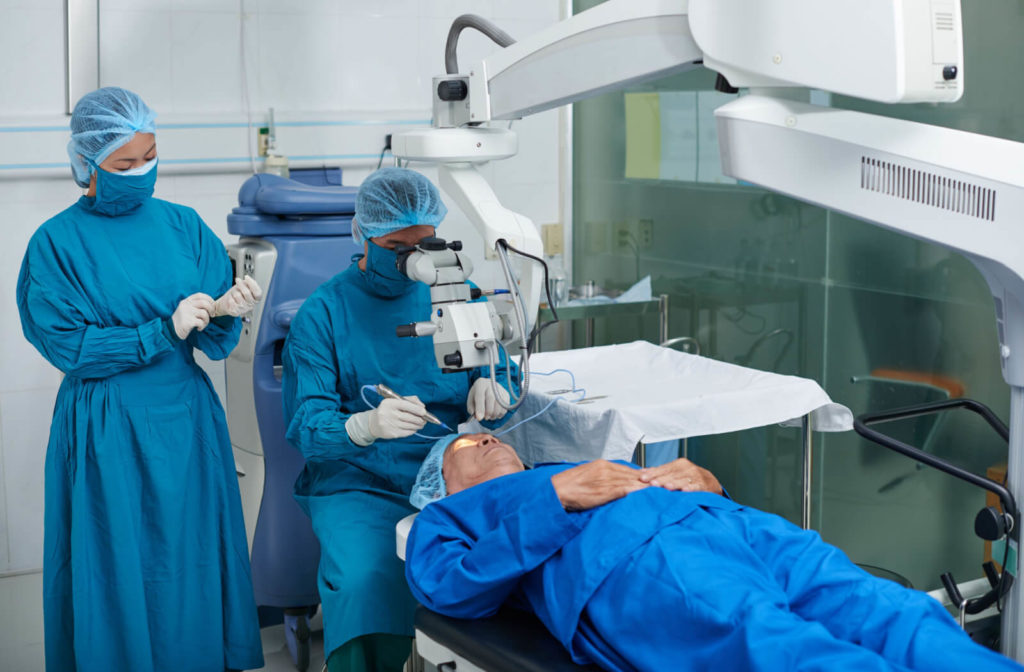Discover a Trusted Optometrist Chino for Family Eye Care Solutions
Discover a Trusted Optometrist Chino for Family Eye Care Solutions
Blog Article
Exploring the most up to date Technological Improvements in Optometry and What They Mean for Eye Doctors
From the precision of Optical Comprehensibility Tomography to the nuanced understandings used by AI-driven analysis tools, these innovations are establishing new requirements in individual analysis and therapy. As these improvements penetrate the practice, eye doctors are faced with the difficulty of welcoming these devices to boost client end results.
Technologies in Diagnostic Equipment
Advancing the field of optometry, innovations in diagnostic tools have actually changed the means eye care professionals analyze and diagnose aesthetic impairments and eye conditions. The past decade has witnessed considerable technological advancements, allowing more thorough and exact analyses. Optical Coherence Tomography (OCT), for example, gives high-resolution cross-sectional pictures of the retina, enabling the early discovery of diseases such as glaucoma and age-related macular degeneration. This non-invasive imaging technique has become important in contemporary optometric method.
An additional secret advancement is the intro of sophisticated corneal topography systems, which map the surface curvature of the cornea with accuracy. These tools are specifically beneficial for fitting contact lenses and identifying corneal conditions. In addition, digital retinal imaging has actually changed typical ophthalmoscopy, offering detailed, scenic views of the retina that help with extensive visual assessments.
The growth of wavefront aberrometry has actually also been critical, allowing the evaluation of refractive mistakes with unequaled precision (Eye Doctor). This technology helps in tailoring rehabilitative lenses and enhancing medical end results for refractive surgical procedures. Collectively, these analysis improvements empower optometrists to supply remarkable client care, ensuring very early treatment and tailored treatment approaches, ultimately boosting visual health results
AI in Individual Monitoring
Structure on the structure of innovative analysis devices, the incorporation of expert system (AI) in person management represents a transformative jump for optometry. AI systems are progressively utilized to boost effectiveness, precision, and customization in person treatment. By assessing substantial amounts of information, AI can identify patterns and anticipate possible ocular conditions, making it possible for eye doctors to customize treatments better. This ability is crucial in managing chronic eye illness such as glaucoma and diabetic person retinopathy, where very early detection and constant surveillance are key.
In addition, AI-driven systems help with structured individual interactions and administrative procedures. Automated scheduling, online consultations, and customized follow-up plans not just boost person satisfaction but likewise optimize time management for practitioners. These systems can triage patients based on the necessity of their conditions, making sure that those in essential requirement receive prompt attention.
In addition, AI boosts decision-making by giving eye doctors with evidence-based recommendations and therapy paths. By incorporating information from digital health and wellness records, AI devices offer insights that inform clinical choices, decreasing the danger of errors and improving patient outcomes. As AI proceeds to advance, its duty in individual administration will likely broaden, improving the landscape of optometric care.
Advancements in Retinal Imaging
In the realm of optometry, retinal imaging has experienced exceptional technical advancements that are boosting analysis capacities and client treatment. Innovations such as Optical Comprehensibility Tomography (OCT) and fundus photography have actually transformed how optometrists envision and assess the retina. OCT, particularly, supplies high-resolution, cross-sectional photos of the retina, enabling the thorough assessment of its layers. This capability is invaluable for early discovery and administration of conditions like glaucoma, diabetic retinopathy, and age-related macular degeneration.
Enhanced imaging modalities like OCT angiography are further refining diagnostic precision. This non-invasive technique maps blood circulation in the retina, supplying critical understandings into vascular wellness without the need for color shots. In addition, flexible optics modern technology is being integrated into retinal imaging systems to fix eye aberrations, delivering unprecedented picture quality. Such improvements help with the recognition of minute retinal modifications find more information that can indicate disease development.
Additionally, innovations in expert system are augmenting retinal imaging by enabling automated analysis of huge datasets. These systems aid optometrists in determining patterns a sign of pathology, consequently improving analysis accuracy and efficiency. Jointly, these technologies are transforming retinal imaging right into a cornerstone of contemporary eye treatment, boosting outcomes and broadening restorative possibilities.
Teleoptometry's Growing Role
Teleoptometry is increasingly becoming a crucial element of eye treatment, driven by developments in data and analysis devices. As optometry embraces electronic makeover, teleoptometry helps with remote consultations, permitting optometrists to extend their solutions past conventional boundaries. This is especially helpful in rural and underserved locations where accessibility to specialized eye care is often limited. By leveraging high-resolution video clip conferencing and progressed retinal imaging, eye doctors can carry out comprehensive eye examinations from afar, guaranteeing visit homepage timely medical diagnosis and treatment.
The combination of synthetic intelligence (AI) further enhances teleoptometry, making it possible for the analysis of aesthetic data and helping in the detection of eye problems such as glaucoma and diabetic retinopathy. AI-powered algorithms can quickly translate intricate imaging data, supplying optometrists with important understandings that bolster professional decision-making.
Additionally, teleoptometry sustains continuity of care with smooth integration with digital health documents (EHRs), permitting eye doctors to maintain thorough individual histories. When consulting with various experts., this makes sure that individuals obtain personalized and constant care also.
Regardless of these advantages, difficulties continue to be, including making sure information protection and managing individual assumptions. However, teleoptometry represents a considerable stride in the direction of even more accessible, efficient, and patient-centered eye treatment. As technology develops, its function is poised to increase even more.

Future Trends in Eye Care
A myriad of ingenious trends is set to reshape the future of eye treatment, driven by technical improvements and the progressing requirements of patients. One substantial trend is the combination of over at this website fabricated knowledge (AI) in diagnostics, which guarantees to enhance the precision and efficiency of eye assessments. AI algorithms can evaluate vast amounts of data from retinal images, potentially spotting problems like diabetic person retinopathy and glaucoma earlier than typical methods.
Additionally, tailored medication is getting traction in optometry, with hereditary testing educating tailored treatment plans. This strategy aims to maximize patient results by tailoring treatments to private hereditary profiles. Wearable innovation, such as smart call lenses, is additionally on the horizon, supplying real-time surveillance of intraocular stress or glucose degrees, therefore giving continuous understandings into systemic and ocular health.
The adoption of augmented truth (AR) and online truth (VR) in training and individual education and learning is an additional arising trend. These innovations provide immersive experiences that can boost understanding and skills both for eye doctors and individuals. As these fads develop, optometrists must remain abreast of technical advancements to give innovative treatment, guaranteeing enhanced patient outcomes and fulfillment in the dynamic landscape of eye care.
Verdict

Collectively, these analysis improvements equip eye doctors to provide remarkable client treatment, making sure early treatment and customized treatment strategies, inevitably enhancing visual wellness outcomes.

As these technologies proceed to advance, optometrists need to adjust and include them into method, inevitably maximizing workflow effectiveness and raising the criterion of eye treatment delivered to clients.
Report this page